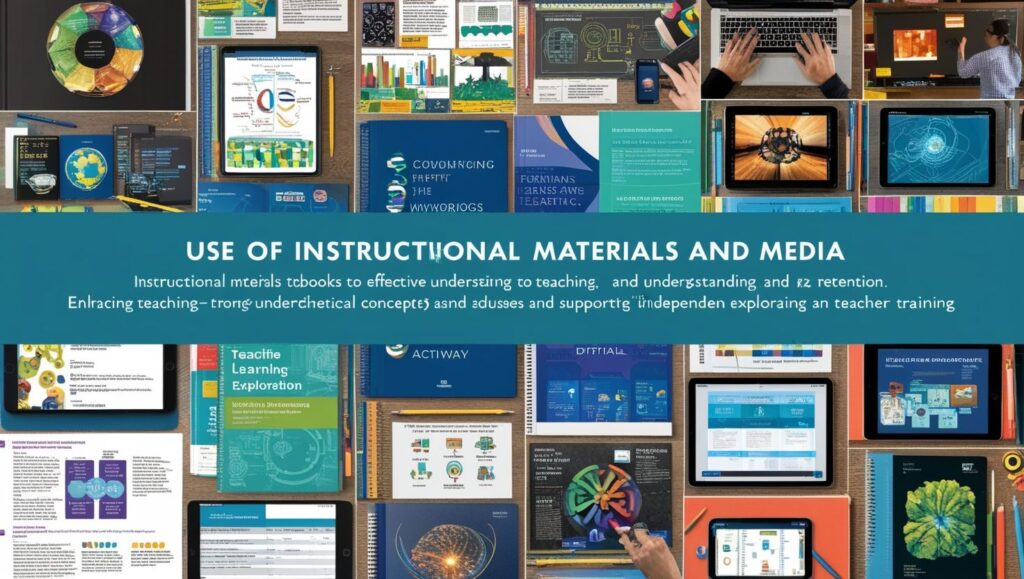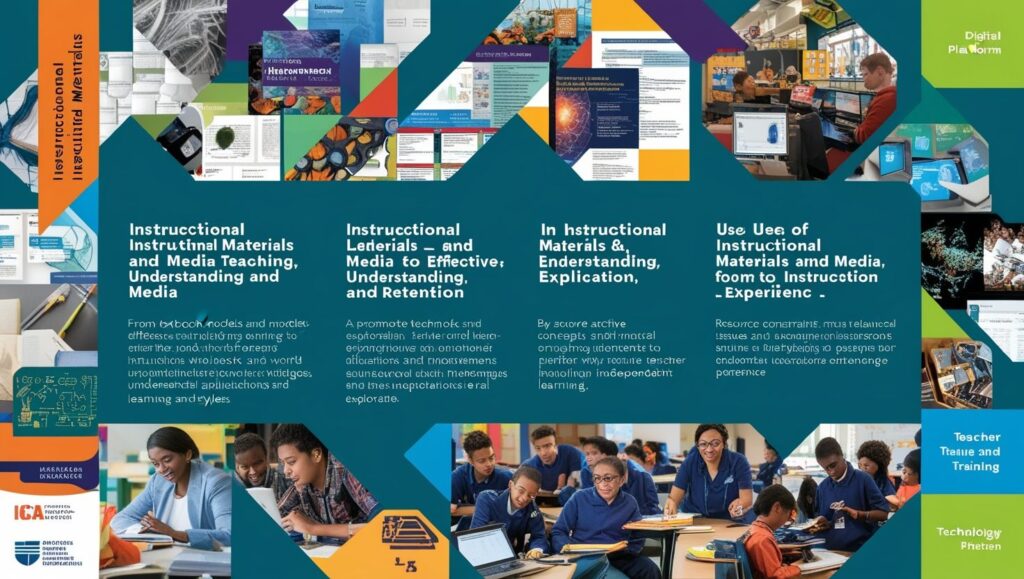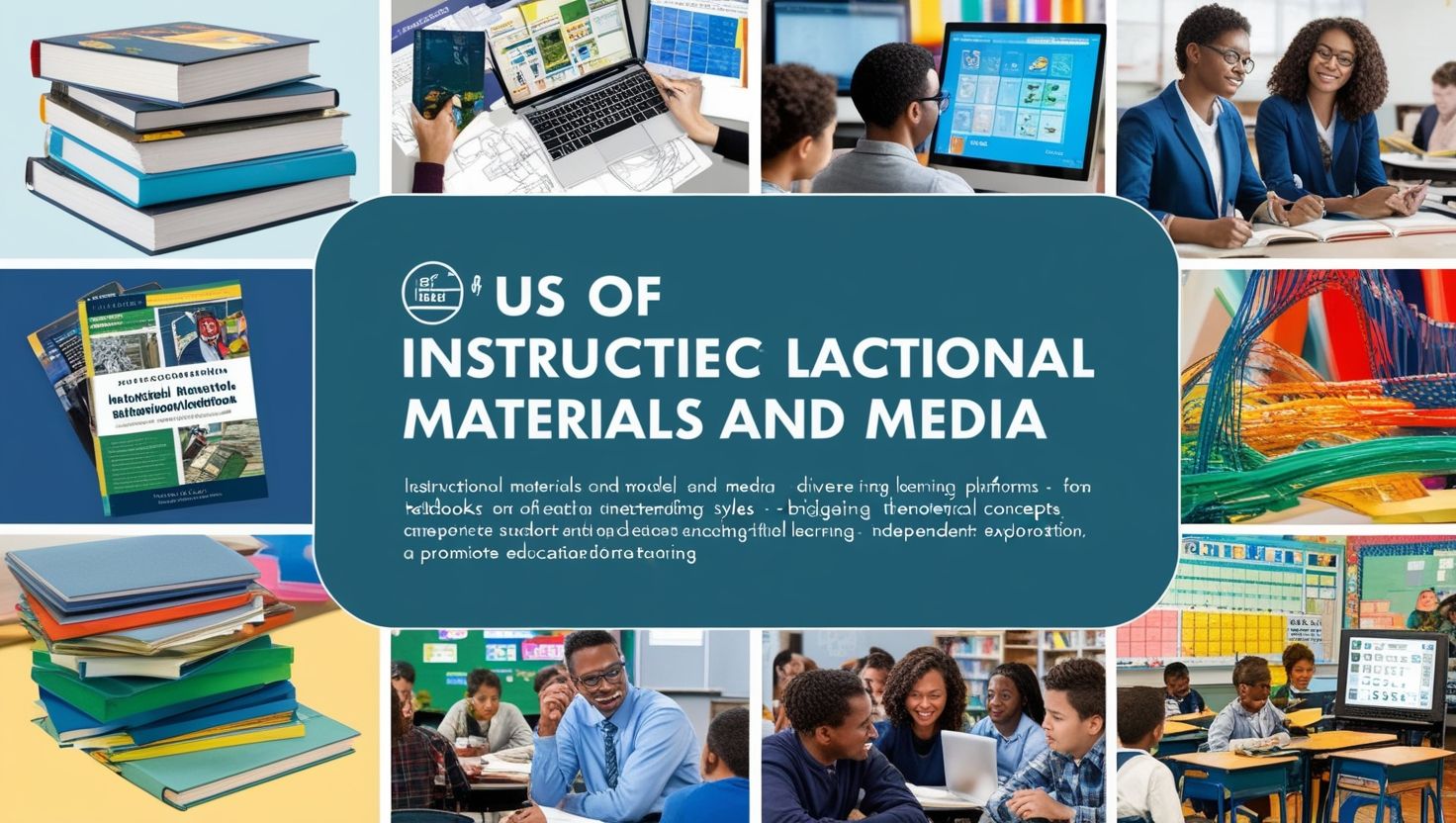Use of Instructional Materials and Media, Instructional materials and media are essential components of effective teaching and learning processes. These tools enhance the quality of education by making lessons more engaging, interactive, and meaningful. By appealing to multiple senses, they support diverse learning styles, bridge theoretical knowledge with practical applications, and promote deeper understanding. This article explores the types, benefits, and challenges of using instructional materials and media in education.
1. Definition and Scope
Instructional materials refer to physical or digital resources used to facilitate learning, such as textbooks, charts, models, and interactive software. Media, on the other hand, encompasses communication channels, including audio, video, and digital platforms, that deliver content. Together, they create a dynamic learning environment that aligns with modern educational goals.
2. Types of Instructional Materials and Media
A variety of tools and media are available for educators to cater to different learning contexts:
a) Printed Materials
- Textbooks: Comprehensive resources aligned with curricula.
- Workbooks: Provide exercises for practice and assessment.
- Charts and Diagrams: Simplify complex ideas visually.
b) Visual Aids
- Posters and Photographs: Enhance conceptual understanding.
- 3D Models: Allow tactile interaction for topics like anatomy or geography.
c) Audio-Visual Media
- Videos and Films: Present real-life applications or simulations.
- Podcasts and Audio Clips: Useful for auditory learners and language instruction.
d) Digital and Interactive Tools
- Educational Software: Interactive platforms that foster self-paced learning.
- Online Resources: E-books, webinars, and learning management systems (LMS).
- Augmented and Virtual Reality (AR/VR): Immersive experiences for topics like history or science.
e) Real Objects and Field Experiences
- Artifacts: Relate to cultural or historical studies.
- Field Trips: Provide hands-on learning opportunities in real-world settings.

3. Benefits of Using Instructional Materials and Media
a) Enhanced Understanding
Instructional materials simplify complex concepts by presenting them in diverse formats. For example, videos on scientific phenomena can make abstract ideas tangible.
b) Increased Engagement
Multimedia tools like animations or simulations capture students’ attention better than traditional lectures. Interactive content encourages active participation.
c) Support for Diverse Learning Styles
Different students learn differently—some are visual learners, while others benefit more from auditory or kinesthetic experiences. Materials and media cater to these preferences, ensuring inclusivity.
d) Improved Retention and Recall
Information presented through multiple sensory channels is more likely to be retained. For instance, combining visuals with narration can significantly boost memory.
e) Bridging Theory and Practice
Media such as case studies, documentaries, or AR simulations connect classroom lessons with real-world applications, preparing students for practical challenges.
f) Promoting Independent Learning
Digital tools like educational apps and LMS platforms empower students to explore subjects at their own pace, fostering self-directed learning.
4. Role in Teaching and Learning
a) Teachers’ Perspective
Instructional materials serve as teaching aids, enabling educators to convey ideas more effectively. They help structure lessons, illustrate points, and provide additional support to explain complex topics.
b) Students’ Perspective
For students, these materials and media create a more engaging and accessible learning experience. They promote collaboration, critical thinking, and problem-solving by offering diverse ways to interact with content.
c) Assessment and Feedback
Digital tools often integrate assessment features, allowing instant feedback on quizzes or assignments. This supports continuous evaluation and improvement.

5. Challenges in Using Instructional Materials and Media
a) Resource Constraints
Schools with limited budgets may struggle to acquire modern instructional materials or technologies. This creates a digital divide between resource-rich and resource-poor institutions.
b) Technical Issues
Dependence on technology can backfire due to equipment failure, connectivity issues, or software glitches, disrupting lessons.
c) Teacher Training
Not all educators are adept at integrating advanced media into their teaching. A lack of training can result in ineffective use of these tools.
d) Overuse of Technology
Excessive reliance on multimedia can overshadow traditional teaching methods, leading to passive learning if not balanced appropriately.
e) Cultural and Language Barriers
Pre-packaged instructional materials may not align with the cultural or linguistic context of certain student groups, reducing their effectiveness.
6. Best Practices for Effective Use
a) Align Materials with Objectives
Instructional materials should align with the learning objectives and curriculum to ensure relevance and effectiveness.
b) Diversify Resources
Using a mix of media—print, visual, audio, and digital—catering to different learning styles enriches the educational experience.
c) Engage Students Actively
Interactive tools like clickers, quizzes, and discussion boards make learning participatory rather than passive.
d) Provide Training for Teachers
Regular workshops and training sessions can help educators stay updated on using modern instructional tools effectively.
e) Evaluate and Adapt
Continuously assess the impact of instructional materials on learning outcomes and adapt strategies as needed.
7. The Future of Instructional Materials and Media
The rapid advancement of technology is shaping the future of instructional tools.
- Artificial Intelligence (AI): Personalized learning experiences through AI-driven analytics.
- Gamification: Integrating game mechanics to make learning fun and competitive.
- Global Collaboration: Platforms like virtual classrooms foster cross-cultural interactions.
- Sustainability: Digital resources reduce the environmental impact associated with traditional printed materials.
Conclusion
Instructional materials and media are indispensable in today’s education system, offering innovative ways to enhance learning experiences. While they present challenges, thoughtful integration, combined with ongoing evaluation, can maximize their benefits. By embracing these tools, educators can create enriched, inclusive, and future-ready learning environments that cater to the needs of diverse learners.

4 thoughts on “Use of Instructional Materials and Media”
Comments are closed.